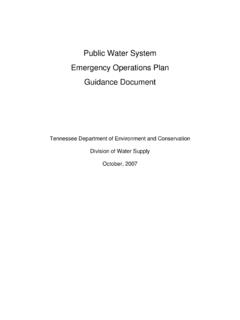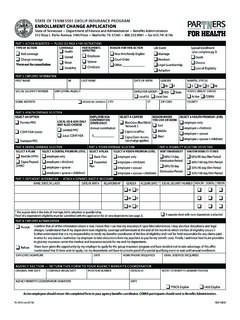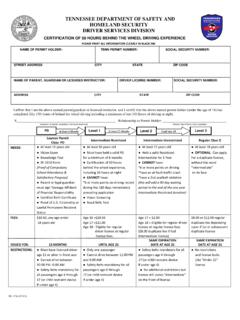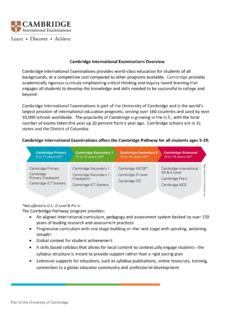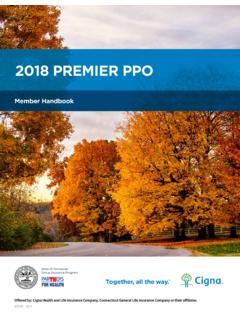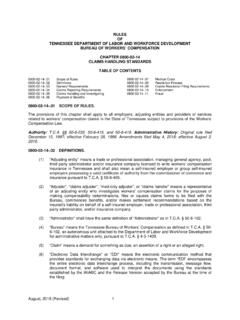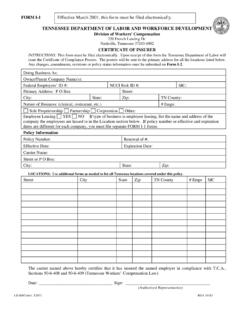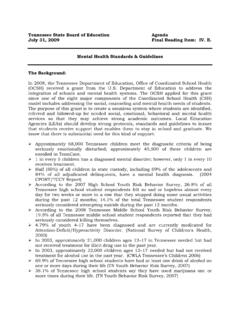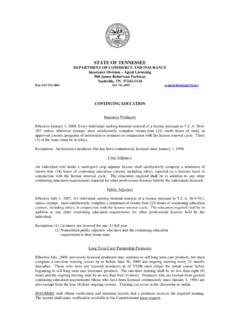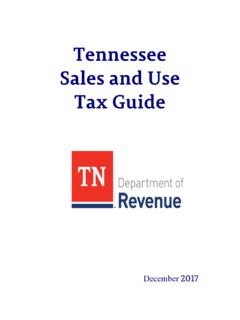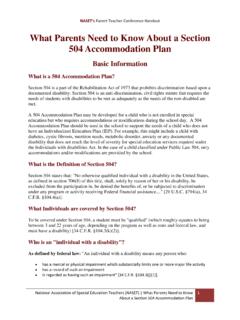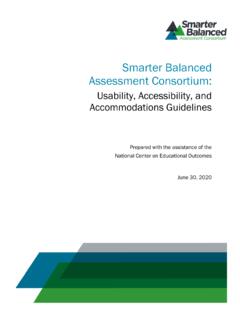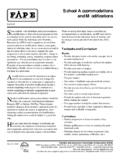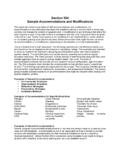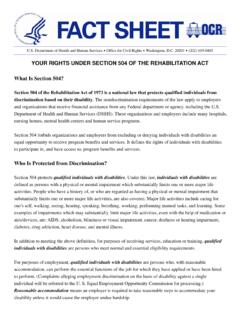Transcription of Section 504 Guide - Tennessee
1 Section 504 Guide &. Model Policies and Procedures A comprehensive Guide and model policies and procedures for Tennessee 's Local Education Agencies on Section 504 of the Rehabilitation Act of 1973. May 2013. Contents Introduction 5. Frequently Used Terms 6. Overview 8. Local Education Agency Responsibilities 11. Frequently Asked Questions Generally 15. Assessment of Academic Skills 17. Discipline 18. Grievances and Due Process 19. Accessibility 20. Employment 21. Major Differences in IDEA and Section 504 23. Appendix 25. Section 504 Coordinator: Duties and Responsibilities 26. Model Notice of Nondiscrimination 27. Model Annual Notice to Parents 28.
2 Model Notice of Procedural Safeguards 29. Model Section 504 Parental Rights 31. Model Section 504 Informational Notice 32. Model Policy Section 504 Complaint/Grievance Procedures 33. Model Section 504 Complaint/Grievance Form 34. Model Section 504 Referral and Recommendations 35. Model Notice of Action/Consent 36. Model Notice of Section 504 Committee Meeting 37. Model Release of Information Form 38. Model Letter to Physician Regarding Medical Concerns 39. Model Physician's Questionnaire for Medical Concerns 40. Model Parent/Student Rights in Identification, Evaluation, Placement 41. Model Receipt of Notice of Procedural Safeguards and Rights 43. Model Annual Review Notice 44.
3 Model Section 504 Student Eligibility/Service plan Form 45. Model Service Student Accommodation plan 48. Model Alternative Learning plan 50. Model Student Behavior plan 52. Model Due Process Hearing Procedures 54. Model Request for Section Due Process Hearing Form 57. TDOE. Section 504 Guide 2|Page For further information contact Assistant General Counsel for Civil Rights (615) 253-1550. It is the policy of the State Board of Education and a priority of the Tennessee Department of Education that there will be no discrimination or harassment on the grounds of race, color, sex, marital status, religion, national origin, age or disability in any educational programs, activities, or employment.
4 This document was produced by Tennessee Department of Education Office of General Counsel Nashville, Tennessee 37243. All or any part of this document may be photocopied for educational purposes without permission from the Tennessee Department of Education (TDOE). TDOE. Section 504 Guide 3|Page Acknowledgment The purpose of this document is to serve as a Guide for local education agencies (LEAs) regarding their obligations under Section 504 of the Rehabilitation Act of 1973 ( Section 504), Title II of the Americans with Disabilities Act of 1990 (Title II), and the Americans with Disabilities Amendments Act of 2008 (ADAA). This document serves as guidance to Section 504 Coordinators, ADA Coordinators, LEA staff and other agencies serving students with disabilities in the development of policies and procedures required by the aforementioned federal laws.
5 This document includes model policies and procedures that comply with the mandates of Section 504. Adherence to Section 504 and Title II is mandated by the Department of Education for the continued receipt of federal funds. Although TDOE cannot mandate adherence to the guidance provided in this document, nor the adoption of the model policies and procedures contained herein, such adherence and adoption are strongly encouraged. This document was reviewed for content by the Department of Education, Office for Civil Rights, Atlanta, Georgia. However, the Office for Civil Rights (OCR), pursuant to its policy, did not endorse this document. TDOE. Section 504 Guide 4|Page Introduction Section 504 of the Rehabilitation Act of 1973 is a civil rights statute which provides: No otherwise qualified individual with handicaps in the United , solely by reason of his/her handicap, be excluded from the participation in, be denied the benefits of, or be subjected to discrimination under any program or activity receiving federal financial assistance.
6 29 USC 794. The purpose of this document is to Guide LEAs so that they may be aware of their obligations under Section 504 of the Rehabilitation Act of 1973. LEAs may contact the TDOE Assistant General Counsel for Civil Rights at (615) 253-1550 for technical assistance. All or any part of this document may be copied for educational purposes without permission from the TDOE. TDOE. Section 504 Guide 5|Page Frequently Used Terms Educational Placement A program and/or service setting with students who are not disabled, to the maximum extent appropriate to the needs of the student. Eligibility A student is eligible if the student: (a) has a physical or mental impairment which substantially limits one or more major life activities; (b) has a record of such an impairment; or (c).
7 Is regarded as having such an impairment. Equal Access An equal opportunity for a qualified person with a disability to participate in or benefit from educational aids, benefits, or services. Free Appropriate Public Education (FAPE) Refers to the provision of regular or special education and related aids and services that are designed to meet the individual educational needs of students with disabilities or impairments as adequately as the needs of students without disabilities or impairments are met and is based upon adherence to procedures that satisfy the requirements pertaining to educational setting, evaluation and placement, and procedural safeguards.
8 LEAs must provide FAPE to each qualified disabled or impaired person in their jurisdiction. FAPE must be provided without cost. Hidden Disabilities Physical or mental impairments that are not readily apparent to others. They include such conditions and diseases as specific learning disabilities, diabetes, epilepsy, allergy, or chronic illnesses. A chronic illness involves a recurring and long-term disability such as heart disease, kidney or liver disease, high blood pressure, or ulcers. Major Bodily Functions Pursuant to the Americans with Disabilities Act Amendments Act of 2008. (ADAAA), such functions include immune system, normal cell growth, digestive, bowel, bladder, neurological, brain, respiratory, circulatory, endocrine, and reproductive functions.
9 This list is not exhaustive. Major Life Activity Functions such as caring for one's self, performing manual tasks, walking, seeing, hearing, speaking, breathing, learning, and working. This list is not exhaustive. In the ADAAA, additional examples include eating, sleeping, standing, lifting, bending, reading, concentrating, thinking, and communicating. See also Major Bodily Functions. Manifestation Determination Meeting of the review committee to determine whether the student's behavior is caused by, or has a direct and substantial relationship to, his/her disability or impairment subsequent to a violation of disciplinary rules by the student. Parent A biological or adoptive parent or guardian, surrogate parent, someone acting in place of a parent (including a grandparent, stepparent, or other relative) with whom the student lives, or someone who is legally responsible for the student.
10 Physical or Mental Impairment (a) any physiological disorder or condition, cosmetic disfigurement, or anatomical loss affecting one or more of the following body systems: neurological;. musculoskeletal; special sense organs; respiratory, including speech organs; cardiovascular;. reproductive; digestive; genito-urinary; hemic and lymphatic; skin; and endocrine; or (b) any mental or psychological disorder such as mental retardation, intellectual disability, organic brain TDOE. Section 504 Guide 6|Page syndrome, emotional or mental illness and specific learning disabilities. A physical or mental impairment does not constitute a disability unless its severity is such that it results in a substantial limitation of one or more major life activities.
